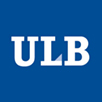By Adi Kuneva
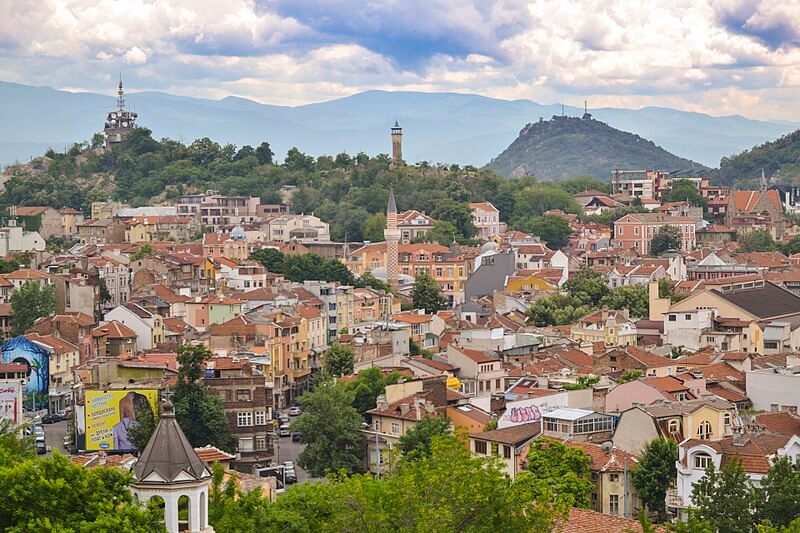
Source: Plovidv free walking tour.
Plovdiv, the second largest city in Bulgaria, was one of the two European Capitals of Culture in 2019 (the other being Matera in Italy). Now, after the initiative is over, it is time to critically reflect on what happened, as opinions are divided. According to Mr. Peikov, one of the initiators of Plovdiv’s candidacy, the city did not take full advantage of the European Capital of Culture (ECC) scheme, due to political interests. According to other experts the city had many big and small scale cultural events, but did not change its cultural infrastructure much and did not develop further governance capacity in the cultural sector. This raised interesting and challenging questions – what exactly happened in Plovdiv in 2019? What changed?
In my attempt to offer answers to such questions I sat down and wrote a short summary of all the occasions on which I visited the city in the past year. In the last 12 months I visited the city eight times, seven of which were for cultural events. In total I stayed around 20 days in the city. I visited exhibitions, watched movies, and attended performances. I vigilantly explored both Plovdiv’s centre and its outskirts. I also personally took part in two cultural projects. This text is about my experience with the European Capital of Culture – Plovdiv in 2019.
First, allow me to reflect on the ambitious plans of Plovdiv for 2019. The bidding book promised a lot: to reform obsolete cultural institutions, revive old industrial buildings as art centres (the Tobacco city project), set up new art venues and performance spaces, integrate the river in the urban fabric (the Adata project), and work on the social cohesion in the city under the motto “Plovdiv together”. Ultimately the city undertook renovation projects in the city centre, repairing and extending pedestrian infrastructure and partially developing the public transport system. New places for art and culture, however, were not created, while some were even closed. The Tobacco city did not materialise and the Adata project was also not integrated as planned. The reasons these projects were not implemented needs a special paper dedicated to them, so I will focus on the events I witnessed personally. If you are interested in more details about the preparatory stages of the ECC initiative in Plovdiv, however, you should check out the great 4CITIES master’s thesis by Antonia Bourjau.
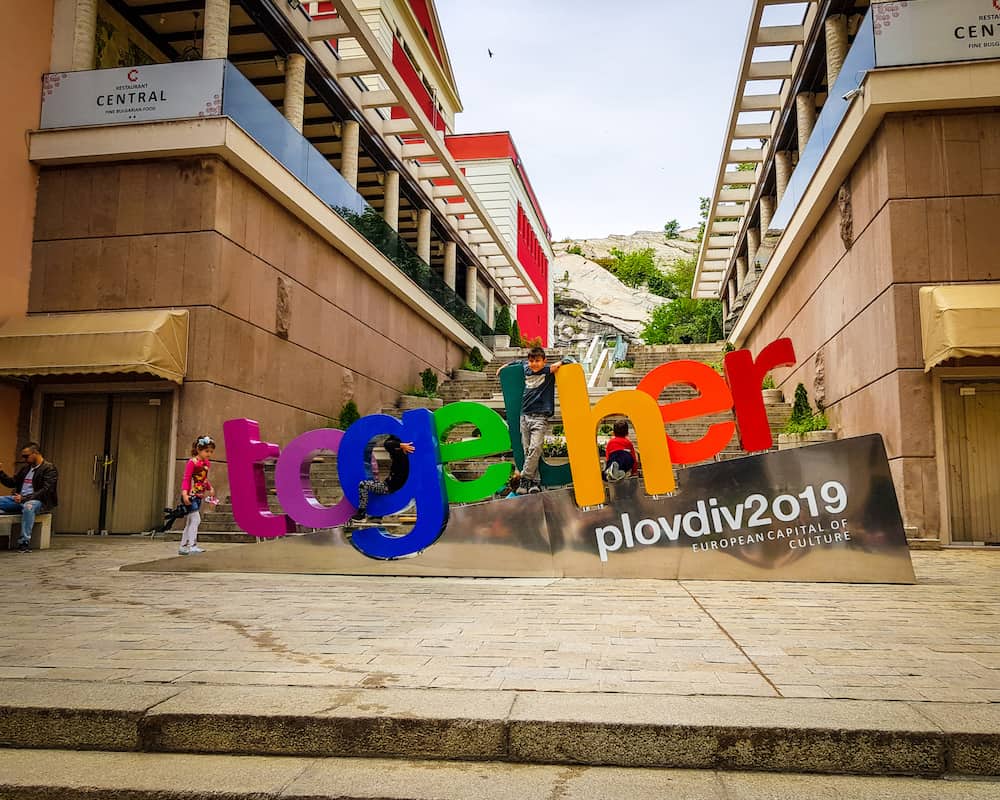
Source: Sofia adventures website.
In the beginning of January, 2019, I went to Plovdiv to attend the opening weekend, which marked the beginning of the long-awaited event – the city officially becoming European Capital of Culture. Most of the city centre, including the main square, was still closed for renovation. The opening ceremony was held on a specially built open-air stage on one of the biggest boulevards in the city centre (which was closed for traffic for the event). It included dance, music, speeches, a light show, and at the end – fireworks. Nevertheless, I found the event itself underwhelming. As the weather was exceptionally cold, my friends and I tried to find better things to do. Away from the main stage there were exhibitions of local artists, or exhibitions connected to the history of the city, which aroused our curiosity. In the late evening a theatre company based in Sofia made a visually captivating fire show in the city’s central park. Later that evening I attended an event at a friend’s art studio, in the company of local artists. When I asked whether any of them had attended the opening ceremony at the city centre, I received only negative responses and could not help but notice the visible lack of excitement displayed on their faces.
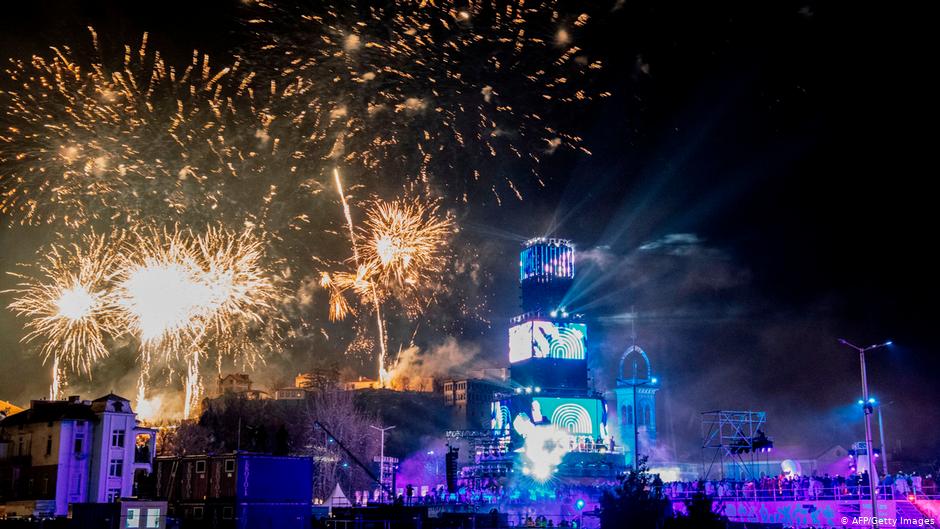
Opening ceremony. Source: Getty images.
My next two visits to Plovdiv were in April: one for the premier of a theatre show I was working for as an administrator and another for a social project in a village located in the nearby mountain Rhodope. For the theatre premier I worked with the association Plovdiv 2019 and in my experience it was quite difficult. Each time I contacted them, I could sense the pressure and the confusion in their office. Each time I spoke with them, stress and frustration built up inside of me as a result of their perplexing requirements. I feel a strong sympathy towards each artistic project that happened in 2019, as I know how difficult it is to organize such events in dynamic conditions. However, I admit that I look at every report from the association ‘Plovdiv 2019’ with strong doubt, as I have first-hand experience of how similar reports are produced.
Both initiatives that brought me to Plovdiv in April were organized by cultural organizations based in Sofia. In a way, Plovdiv needed the professionals from Sofia to work in the city in order to perform this year, or perhaps the professionals needed the budget available in Plovdiv and strategically changed their work accordingly. Similarly, the city needed the audience from the capital to visit Plovdiv in order to make the big scale events and festivals sustainable. From big music festivals, to smaller contemporary dance festivals, the programming was adapted so that the audience traveling from Sofia and around could attend.
In the summer of 2019 I had aspirations to live and work in Plovdiv on artistic projects for three months. Unfortunately, one of the projects I was asked to work on never materialised due to lack of funding, and the other one was delayed for more than two months, at which point I was unable to join. Nevertheless, I did find my way to Plovdiv in July. I attended two events: the premier of a Bulgarian movie “3D Dogs”, directed by a local artist, and a music performance in the Austrian cultural pavilion by Viennese musician Lena Ka. Both events were small in scale and targeted a select audience, without attracting any media attention. The movie had nothing to do with the ECC program and funding. At the same time, this was the moment in which I felt like I was part of an international society of creative and innovative people and that Plovdiv could be a capital of culture on a European level beyond 2019.
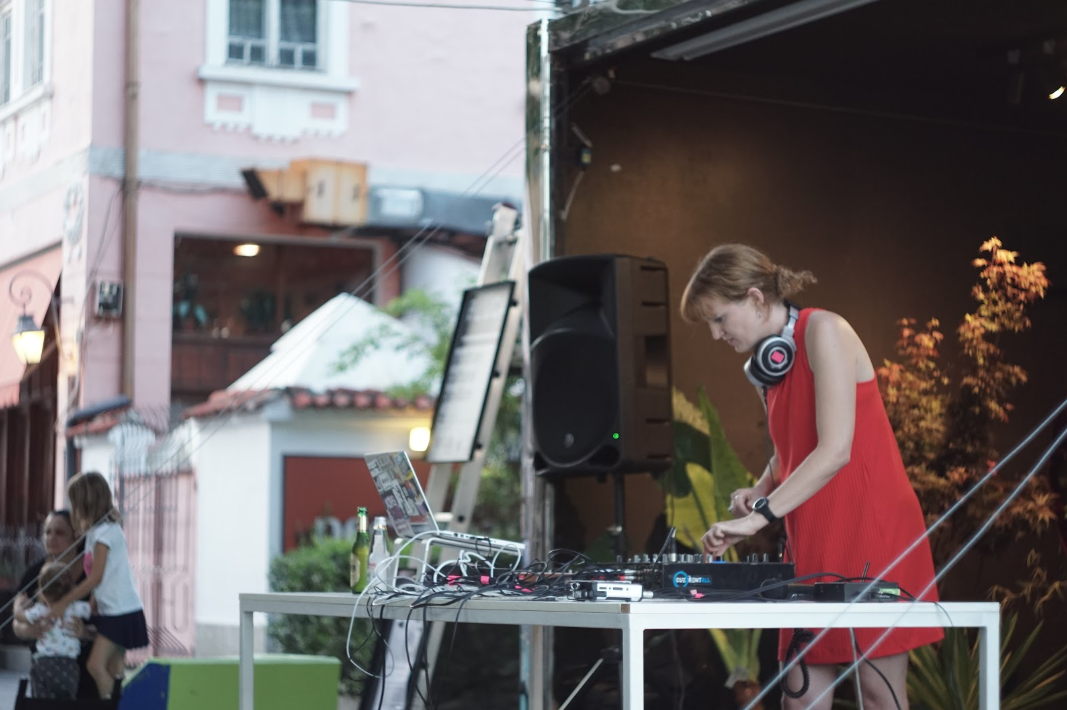
Source: author.
In September I stayed in an Airbnb in the city centre, in an area called Kapana. Kapana is a result of efforts by artists and the city to revitalize a district and turn it into a creative one. Currently it is a gentrifying area, where bars, cafes, some galleries, and shops for artisanal products dominate. I walked around the area, looked at the graffiti on the streets, enjoyed a Taiwanese lunch, and had quite an expensive cup of coffee. Later I went back to the main square of Plovdiv, which was finally ready. I walked to the nearby dance hall to watch “Caged”, a dance show co-produced by Bulgarian and South Korean artists.
In October I went specifically for “100% Plovdiv”, a co-production of the German company Rimini Protokoll and the Bulgarian documentary theatre studio Vox Populi. The theatre performance was based on the demography of Plovdiv and represented the city on the stage. A hundred people from the city went on stage and recreated the social and demographic profile of the city. It was entertaining, but also critical, reflecting on human rights topics such as decrimination against minorities, stereotypes and general biases between ethnicities, and social and economic inequality in the city. There was no entrance fee for the performance, which made it accessible, but it happened only four times and with the lack of publicity it was not well-attended. I felt like this cultural event was really trying to bring people together (as the motto of Plovdiv 2019 suggests). The full performance can be found online here.
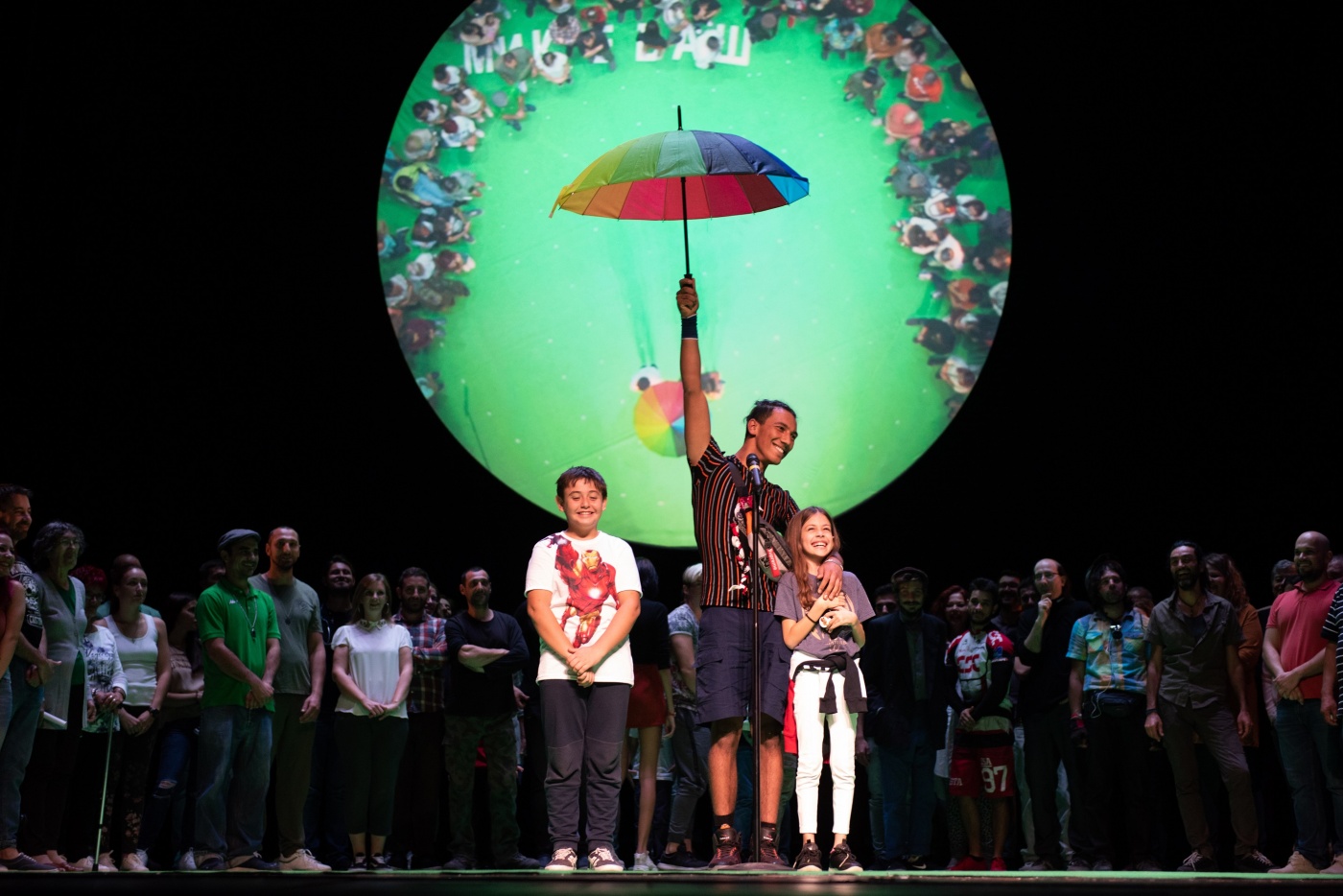
Plovdiv 100%. Source: Plovdiv 2019 website
Speaking of the motto “together”, one of the main aims of ECC in Plovdiv was to work with ethnic minorities, namely Turkish and Roma, living mainly in the large neighbourhood of Stolipinovo. The neighborhood is far from the city center, it is quite big and in a way it is a city within the city. Many people from Plovdiv have never been to Stolipinovo, and some of the residents of Stolipinovo have never been to the city centre. The segregation is quite obvious and the economy and politics behind it are not an easy target for art initiatives. At the end of November I attended the exhibition “The beauty we share”, which was created by artist Hannah Rose (UK/BG) and social anthropologist Nikola Venkov (BG). The exhibition was a unique showcase of multilingual work done in collaboration with the people of Stolipinovo. The work was the result of more than a year of work by Hanna and Nikola and several families from the most deprived area in Stolipinovo.
After I saw the exhibition, Nikola took me to Stolipinovo for a walk. It was my first visit to the neighbourhood and it turned out to be much more than just a mere walk in a new area. We took a stroll along the main street of the neighbourhood, a vibrant commercial street, full of life: people selling various kinds of goods on the street, others walking and talking while searching for something in particular or just enjoying a walk despite the cold weather. Architect Jan Gehl would be proud of so much life between the buildings and an urban design orientated towards the human scale (except maybe for the constantly passing cars).
We ended up visiting the home of a Turkish lady and her two kids and then an entirely different reality unfolded before my eyes – it was the poorest family I had ever visited. The difference between my life and their life was so sharp, I did not know how to act and what to do. The ambition to change the society we live in with art and culture seemed irrelevant for a moment. I started questioning myself – what was the capacity of the program European Capital of Culture to tackle questions of poverty and inequality? I am yet to find an answer.
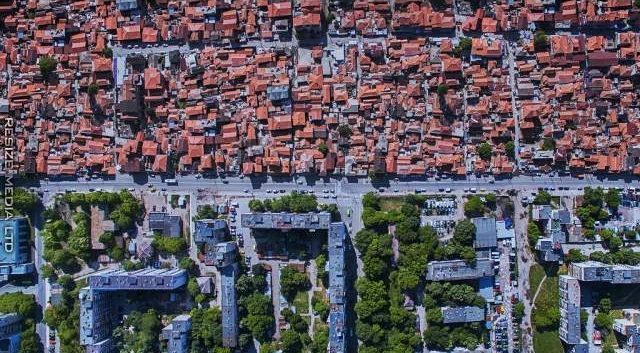
Stolipinovo from above. Source: marica.bg
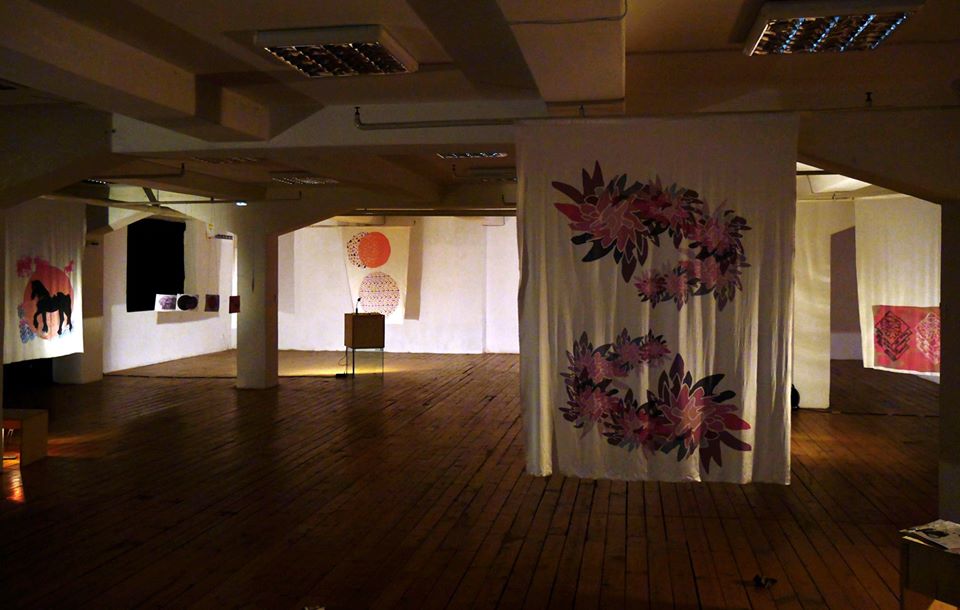
Source: “The beauty we share” facebook page
There was no big closing party to mark the end of Plovdiv’s 12-month reign as ECC, only a humble ceremony in which the city of Plovdiv passed the title to Rijeka (Croatia) and Galway (the Republic of Ireland) for 2020. However, I did visit the city once more. I stayed in the same art studio I had visited in January and I realised, that for all my visits this year, this was the only experimental and independent venue I had seen in the city. Again I asked around about opinions on the past year and again I received mainly negative answers or unwillingness to share any thoughts about the ECC scheme.
So what changed in Plovdiv in 2019? There were investments in the physical space, the renovation of the city centre for example. But there was no significant change in the cultural infrastructure and especially in the quantity and quality of independent and experimental venues. The city centre experienced gentrification for which I am yet to find reliable data. There was a generous cultural program throughout the year with big and small, local and international collaborations, which attracted cultural tourism and additional investments. However, the program did not live up to the ambitious promise of its motto, “Together”. The cultural and artistic community experienced stress and conflicts and is now more divided than ever. Additionally, the persistent social inequalities were rarely the focus of the projects in the city.
I cannot help but wonder what will happen in the next few years. What will be the role of culture in the future urban development of Plovdiv? The first decisions taken by the new municipal council are discouraging. The budget for culture in 2020 will be much less than promised. However, the new chief architect of the city is set to complete the transformation of the old industrial tobacco factory into a cultural centre (the Tobacco city project). This makes me think that within the city’s administration there is no clear decision whether culture will continue to be the engine of urban development and urban change in the future.

